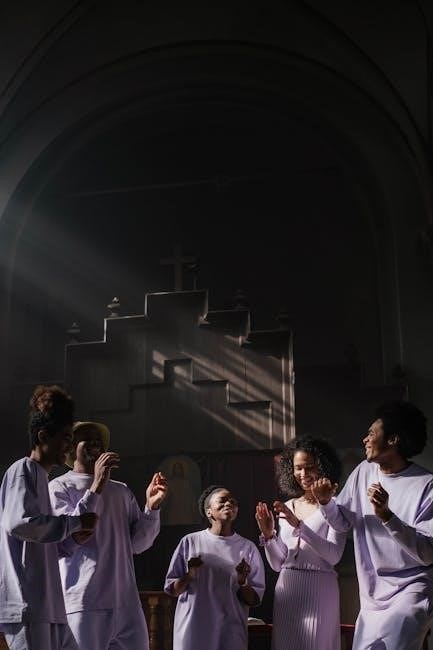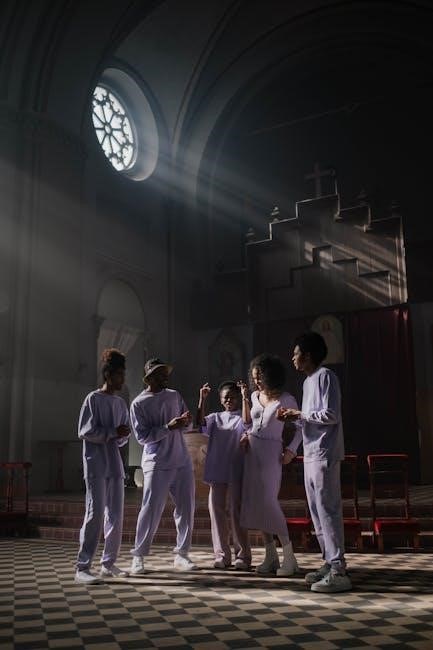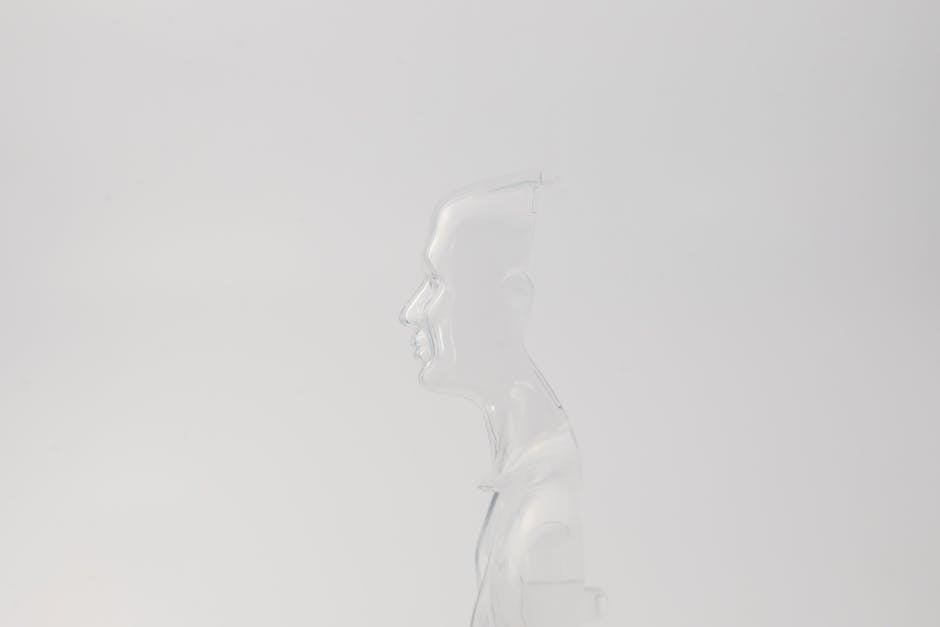In Praise of Shadows is a captivating essay by Junichiro Tanizaki, exploring Japan’s traditional aesthetics through light, darkness, and shadow, offering profound insights into cultural identity and beauty.
Overview of the Essay and Its Significance
In Praise of Shadows is a seminal essay by Junichiro Tanizaki, first published in 1934, that delves into the essence of Japanese aesthetics, emphasizing the profound role of shadows and darkness in shaping cultural identity. The essay contrasts traditional Japanese sensibilities with the influx of Western modernity, particularly in architecture, art, and daily life. Tanizaki laments the loss of subtle, nuanced beauty in favor of harsh, homogeneous lighting. He explores themes such as the patina of lacquerware, the art of moon-viewing, and the tranquility of dimly lit spaces, advocating for a deeper appreciation of the interplay between light and shadow. This work remains a cornerstone of discussions on cultural preservation and aesthetic philosophy.
Junichiro Tanizaki’s Perspective on Japanese Aesthetics
Tanizaki’s perspective on Japanese aesthetics, as expressed in In Praise of Shadows, revolves around the celebration of subtlety and nuance. He argues that beauty in Japanese culture is often found in the interplay of light and darkness, where shadows create depth and mystery. Tanizaki criticizes the adoption of Western modernity, which he believes erodes traditional aesthetics by favoring harsh, uniform lighting. He underscores the importance of materials like lacquerware and wood, which gain character through age and use. Tanizaki’s essay is a passionate plea to preserve Japan’s unique sensory experiences, emphasizing that true beauty lies not in brightness but in the quiet, unassuming qualities of shadow and darkness.

The Concept of Shadows in Japanese Culture
Shadows in Japanese culture symbolize depth, subtlety, and the beauty of imperfection, creating a profound ambiance in art, architecture, and traditional practices like tea ceremonies and No theatre.
Shadows as a Design Element in Architecture
Shadows play a vital role in Japanese architecture, creating depth and ambiance through the interplay of light and darkness. Traditional designs, such as shoji screens and sliding doors, utilize shadows to evoke a sense of mystery and tranquility. The careful placement of lighting sources enhances these effects, fostering a connection between indoor and outdoor spaces. Shadows are not merely the absence of light but a deliberate design choice that reflects Japan’s cultural appreciation for subtlety and nuance. This aesthetic principle is central to Tanizaki’s essay, where he highlights how shadows enrich the beauty of traditional spaces, making them feel alive and deeply human.
The Role of Darkness in Japanese Art and Beauty
Darkness holds a sacred place in Japanese art and beauty, embodying subtlety and depth; It is not merely the absence of light but a deliberate aesthetic choice that fosters introspection and emotion. From the muted tones of ink paintings to the dimly lit stages of Noh theater, darkness creates a space for imagination and spiritual connection. Tanizaki’s essay illustrates how shadows and darkness are essential to the Japanese concept of yūgen, a profound and mysterious sense of beauty that resonates deeply within the soul. This reverence for darkness is a cornerstone of Japan’s unique artistic and cultural identity.

Traditional Japanese Aesthetics
Traditional Japanese aesthetics celebrate the beauty of imperfection, simplicity, and the interplay of light and shadow, reflecting a deep connection to nature and the spiritual essence of life.
The Patina of Lacquerware and Moon-Viewing Customs
The patina of lacquerware, with its subtle depth and shadows, embodies Japan’s reverence for aging beauty. Moon-viewing customs similarly reflect a deep appreciation for natural subtlety, where darkness enhances the poetic essence of the moment. These traditions highlight the interplay of light and shadow, emphasizing the emotional and spiritual depth found in imperfection and simplicity. Tanizaki’s essay illuminates how these elements, often overlooked in Western aesthetics, are central to Japan’s cultural identity and its unique perception of beauty. Through these customs, Japan celebrates the profound elegance of the intangible and the transient.
The Influence of Shadows on Ceramics and Tableware
Tanizaki highlights the role of shadows in the aesthetic appeal of ceramics and tableware, contrasting them with lacquerware. While ceramics are functional and visually appealing, they lack the depth and subtlety that shadows bring. The interplay of light and shadow enhances the beauty of tableware by highlighting textures and forms. However, modern lighting often diminishes this effect, reducing the nuanced beauty that shadows contribute. This contrast underscores Tanizaki’s appreciation for the interplay of light and darkness in traditional Japanese aesthetics, emphasizing the importance of shadows in preserving the unique charm of ceramics and tableware.

Light and Shadow in Modern Context
Modern lighting often disrupts traditional shadow-rich environments, altering the subtle interplay of light and darkness cherished in Japanese aesthetics, highlighting the tension between modernity and tradition.
Contrasting Western Modernity with Japanese Tradition
Tanizaki’s essay highlights the stark contrast between Western modernity, which prioritizes brightness and efficiency, and Japan’s traditional reverence for subtlety and shadows. He laments the loss of nuanced, shadow-rich environments as Western-style electric lighting became prevalent, eroding the delicate aesthetics of traditional Japanese spaces. The essay critiques the homogenization of global culture, where the embrace of modernity often leads to the dismissal of heritage. Tanizaki argues that Japan’s unique beauty lies in its embrace of darkness and imperfection, qualities increasingly overshadowed by the stark, uniform illumination of the modern world. This tension between light and shadow mirrors the broader struggle to preserve cultural identity in the face of globalization.
The Impact of Modern Lighting on Traditional Spaces
Modern lighting has profoundly altered traditional Japanese spaces, diminishing the subtle interplay of light and shadow that once defined their beauty. Tanizaki mourns the loss of the soft, ambient glow of oil lamps and candles, replaced by harsh, uniform electric lights. This shift disrupts the careful balance of chiaroscuro, erasing the depth and mystery that shadows bring to architecture and design. Traditional spaces, once alive with the nuances of natural light and darkness, now feel sterile and homogenized. The essay underscores how modern illumination, while practical, sacrifices the aesthetic and emotional richness of shadowed environments, a loss deeply felt in Japan’s cultural landscape.
The Legacy of “In Praise of Shadows”
In Praise of Shadows endures as a timeless critique of modernity, inspiring visual artists and designers while remaining a vital reflection on cultural identity and aesthetic values.
Influence on Visual Artists and Contemporary Design
In Praise of Shadows has profoundly influenced visual artists and designers, inspiring works that embrace the interplay of light and darkness. Artists like Hiroshi Sugimoto have drawn inspiration from Tanizaki’s exploration of shadows, incorporating these concepts into photography and installation art. The essay’s emphasis on the beauty of imperfection and the subtlety of darkness has also shaped contemporary design, particularly in architecture and interior spaces. Designers often reference Tanizaki’s ideas when creating atmospheres that balance minimalism with depth, proving the essay’s enduring relevance in modern aesthetics. Its insights continue to guide creatives in capturing the essence of tradition within a modern context.
The Essay’s Relevance in Today’s World
In Praise of Shadows remains a timeless reflection on the essence of human connection to our environment. Tanizaki’s meditation on light, shadow, and darkness resonates in today’s fast-paced, technology-driven world, where the pursuit of progress often overshadows the beauty of subtlety. The essay’s themes of sustainability, the value of imperfection, and the importance of preserving cultural heritage align with contemporary discussions on environmental consciousness and mindful living. Its exploration of traditional aesthetics offers a counterpoint to modernity, inspiring new perspectives on design, architecture, and lifestyle. Tanizaki’s work continues to evoke a deeper appreciation for the interplay of light and shadow in our daily lives.

Availability and PDF Version
In Praise of Shadows is widely available in digital formats, including PDF, from sources like Leetes Island Books and online platforms, making it easily accessible for modern readers.
Accessing the Essay in Digital Format
In Praise of Shadows can be accessed in various digital formats, including PDF, through platforms like Leetes Island Books and online archives such as the Internet Archive. Readers can download the PDF version for free or purchase it from digital bookstores. The essay is also available as an e-book, ensuring accessibility for modern readers interested in Japanese aesthetics. Additionally, several websites offer free downloads, making it easy to explore Tanizaki’s insights into light, shadow, and traditional Japanese culture from the convenience of digital devices. This accessibility has helped preserve the essay’s relevance in today’s world;
Free Download Options and Online Resources
The essay In Praise of Shadows is widely available for free download in PDF format. Platforms like the Internet Archive and various online repositories offer the full text, allowing readers to explore Tanizaki’s reflections on Japanese aesthetics without cost. Additionally, academic and cultural websites provide free access to the PDF version, making it easily accessible to a global audience. To locate a free download, searching for “In Praise of Shadows PDF” yields numerous reliable sources. While some sites may charge for the file, many offer it for free, ensuring its accessibility to those interested in its profound insights into light, shadow, and culture.



